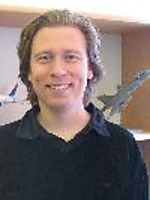Project Solaris
Status:
finished
Start date:
2009-02-13
End date:
2009-03
Project Solaris is a student project involving all phases in the development of a solar powered unmanned aircraft vehicle (UAV) spanning at least two years. UAVs are the wave of the future and photovoltaics (possibly in combination with fuel cells) has interesting environmental aspects. The project is divided into four phases where each will contain a distinct task:Phase 1: The feasibility study makes up for the first step towards the realization of the aircraft and has the purpose of evaluating if the proposed project is possible to achieve. Also very important in this stage is that a list of requirements for project Solaris needs to be formulated. A sketch of the initial design is also to emerge from this phase. At the end of this phase we will not only be able to analyze the first critical design parameters but we will also have the baseline for a design tool to continue building on in subsequent phases. This excel-based spread-sheet will be the heart of the whole project.Phase 2: Taken that the feasibility study gives green light for the proposed design, then this stage will follow in which the design is further optimized and frozen to a level of detail that the construction of the prototype could commence. The focus in this phase is include very much the same as in the previous phase yet now with a focus on achieving the final and fully detailed design. This phase would probably be more labor-intensive than phase one since all details of the design now have to be finalized.Phase 3: This phase contains the actual building of the aircraft and ends with the first successful flights (not necessarily involving autonomous flight). Note that this phase does not include payload other than that needed for crude navigation and control of the airplane, e.g. GPS and camera.Phase 4: This phase that could go on for as long as interest and funding remain has the focus on developing the navigation and control from both the autonomously and the remotely piloted aspect. This is also the phase for the implementation of a flora of useful payloads, e.g. cameras and sensors of different kinds. Further testing and validation of the actual aircraft, e.g. structures, aerodynamics etc., and implementations of modifications could also be ongoing for a while.




